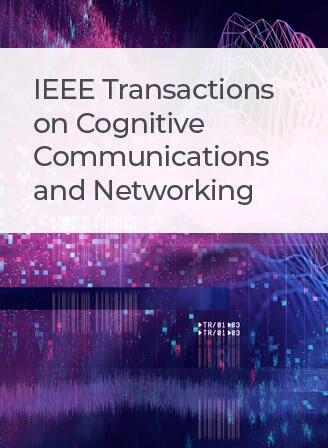Pattern Design and Power Management for Cognitive LEO Beaming Hopping Satellite-Terrestrial Networks
IF 7.4
1区 计算机科学
Q1 TELECOMMUNICATIONS
IEEE Transactions on Cognitive Communications and Networking
Pub Date : 2023-07-28
DOI:10.1109/TCCN.2023.3299576
引用次数: 0
Abstract
The number of base stations (BSs) in remote areas is poor, and seamless coverage cannot be achieved. This paper investigates a cognitive satellite-terrestrial network, including the low earth orbit-beam hopping (BH) satellite and terrestrial systems. Besides, the weighted capacity-request ratio is regarded as the quality of service (QoS) in the satellite system, and the weight indicates channel quality and service priority. Similarly, the capacity-request ratio is introduced as the QoS in the terrestrial system. By establishing a relationship between beams and terminals, the solution space of the BH pattern and beam power is shrunk, and the power allocation competition algorithm is proposed. The proposed algorithm promptly obtains a better solution than the particle swarm optimization and genetic algorithms. As the secondary system, the terrestrial system should obtain an accurate sense of the satellite system. We design a dynamic-ratio threshold spectrum detection mechanism, which causes less miss detection than energy detection under co-channel interference (CCI). Moreover, based on CCI suppression and quick selection of greedy thought, an adaptive resource adjustment algorithm is determined for the BS pattern and transmit power. Finally, the efficiency of the proposed algorithms and spectrum detection mechanism is demonstrated in simulations.认知低地轨道波束跳频卫星-地面网络的模式设计和电源管理
偏远地区基站(BS)数量少,无法实现无缝覆盖。本文研究了一种认知型卫星-地面网络,包括低地球轨道波束跳频(BH)卫星和地面系统。此外,加权容量请求比被视为卫星系统的服务质量(QoS),其权重表示信道质量和服务优先级。同样,在地面系统中,容量请求比也被引入作为 QoS。通过建立波束和终端之间的关系,缩小了 BH 模式和波束功率的求解空间,并提出了功率分配竞争算法。与粒子群优化和遗传算法相比,所提出的算法能迅速获得更好的解决方案。作为辅助系统,地面系统应准确感知卫星系统。我们设计了一种动态比率阈值频谱检测机制,在同信道干扰(CCI)情况下,该机制比能量检测更能减少漏检。此外,在抑制 CCI 和快速选择贪婪思想的基础上,确定了针对 BS 模式和发射功率的自适应资源调整算法。最后,模拟演示了所提算法和频谱检测机制的效率。
本文章由计算机程序翻译,如有差异,请以英文原文为准。
求助全文
约1分钟内获得全文
求助全文
来源期刊

IEEE Transactions on Cognitive Communications and Networking
Computer Science-Artificial Intelligence
CiteScore
15.50
自引率
7.00%
发文量
108
期刊介绍:
The IEEE Transactions on Cognitive Communications and Networking (TCCN) aims to publish high-quality manuscripts that push the boundaries of cognitive communications and networking research. Cognitive, in this context, refers to the application of perception, learning, reasoning, memory, and adaptive approaches in communication system design. The transactions welcome submissions that explore various aspects of cognitive communications and networks, focusing on innovative and holistic approaches to complex system design. Key topics covered include architecture, protocols, cross-layer design, and cognition cycle design for cognitive networks. Additionally, research on machine learning, artificial intelligence, end-to-end and distributed intelligence, software-defined networking, cognitive radios, spectrum sharing, and security and privacy issues in cognitive networks are of interest. The publication also encourages papers addressing novel services and applications enabled by these cognitive concepts.
 求助内容:
求助内容: 应助结果提醒方式:
应助结果提醒方式:


